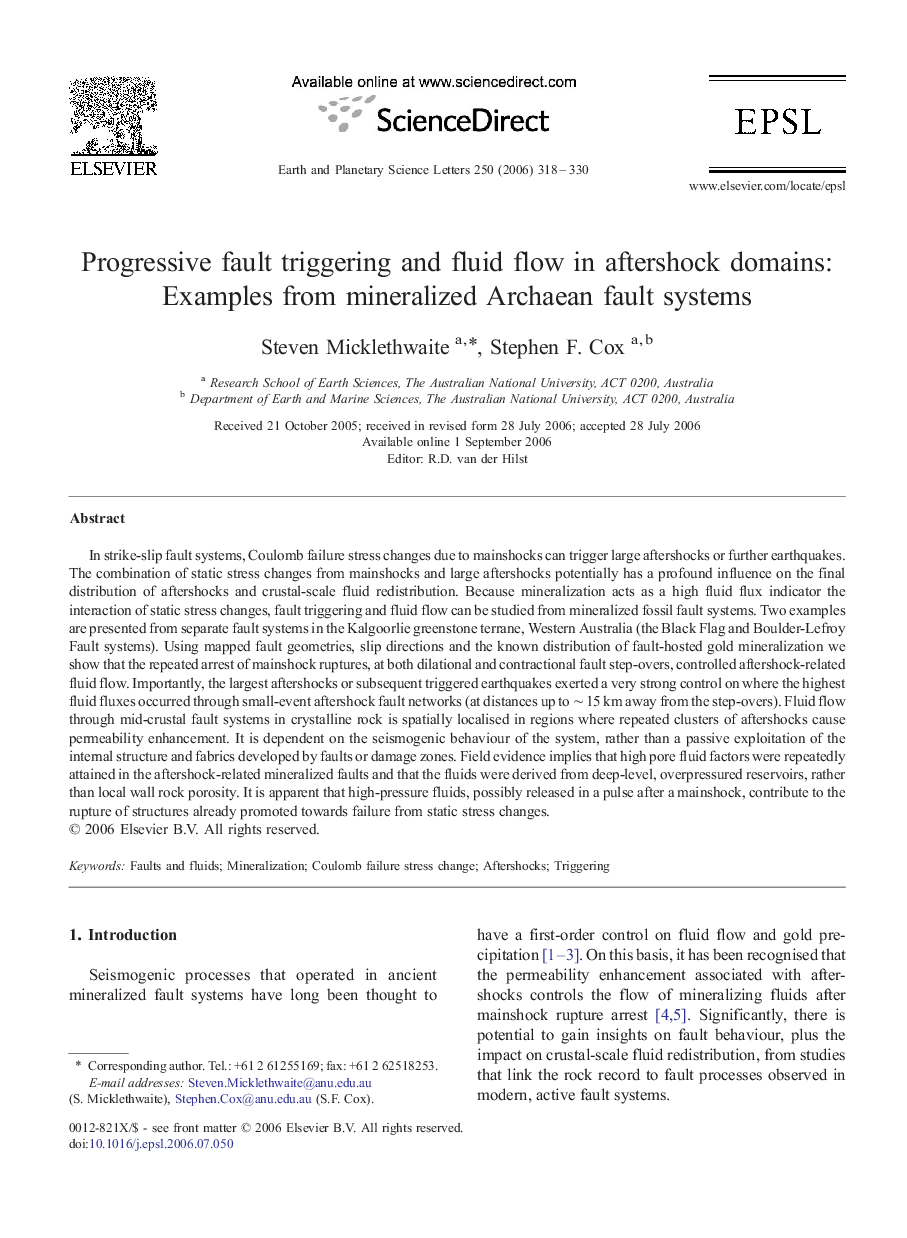| کد مقاله | کد نشریه | سال انتشار | مقاله انگلیسی | نسخه تمام متن |
|---|---|---|---|---|
| 4680706 | 1634935 | 2006 | 13 صفحه PDF | دانلود رایگان |

In strike-slip fault systems, Coulomb failure stress changes due to mainshocks can trigger large aftershocks or further earthquakes. The combination of static stress changes from mainshocks and large aftershocks potentially has a profound influence on the final distribution of aftershocks and crustal-scale fluid redistribution. Because mineralization acts as a high fluid flux indicator the interaction of static stress changes, fault triggering and fluid flow can be studied from mineralized fossil fault systems. Two examples are presented from separate fault systems in the Kalgoorlie greenstone terrane, Western Australia (the Black Flag and Boulder-Lefroy Fault systems). Using mapped fault geometries, slip directions and the known distribution of fault-hosted gold mineralization we show that the repeated arrest of mainshock ruptures, at both dilational and contractional fault step-overs, controlled aftershock-related fluid flow. Importantly, the largest aftershocks or subsequent triggered earthquakes exerted a very strong control on where the highest fluid fluxes occurred through small-event aftershock fault networks (at distances up to ∼ 15 km away from the step-overs). Fluid flow through mid-crustal fault systems in crystalline rock is spatially localised in regions where repeated clusters of aftershocks cause permeability enhancement. It is dependent on the seismogenic behaviour of the system, rather than a passive exploitation of the internal structure and fabrics developed by faults or damage zones. Field evidence implies that high pore fluid factors were repeatedly attained in the aftershock-related mineralized faults and that the fluids were derived from deep-level, overpressured reservoirs, rather than local wall rock porosity. It is apparent that high-pressure fluids, possibly released in a pulse after a mainshock, contribute to the rupture of structures already promoted towards failure from static stress changes.
Journal: Earth and Planetary Science Letters - Volume 250, Issues 1–2, 15 October 2006, Pages 318–330